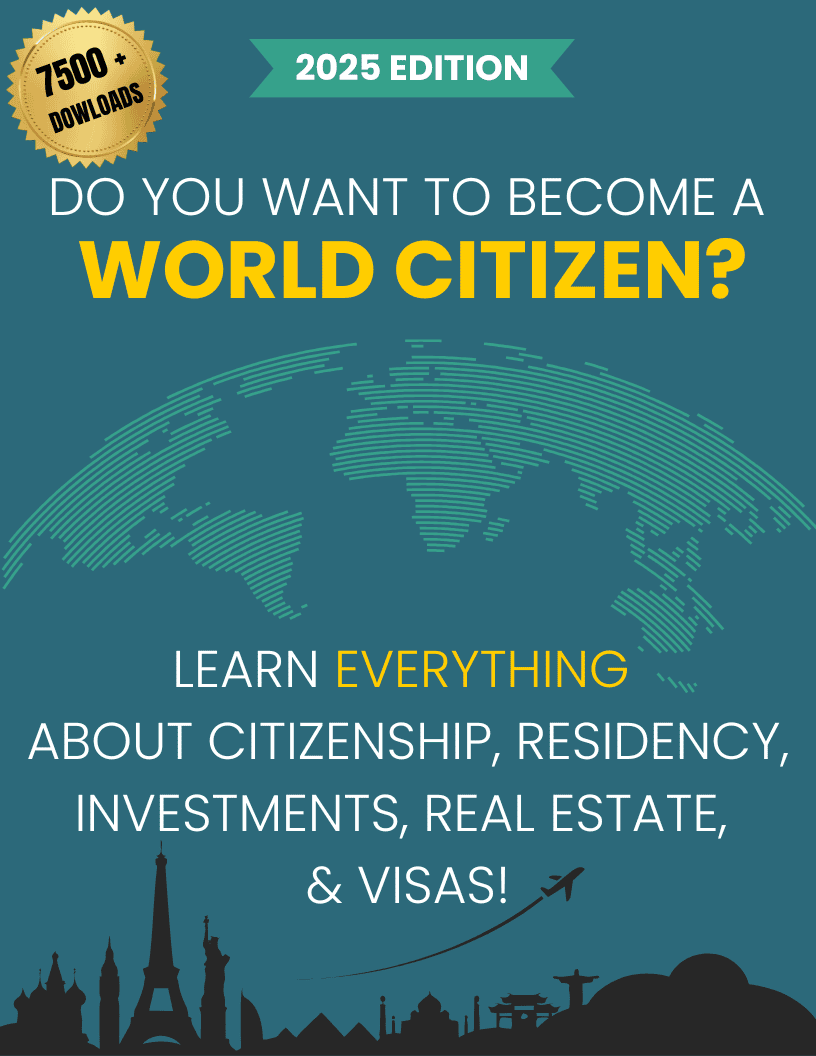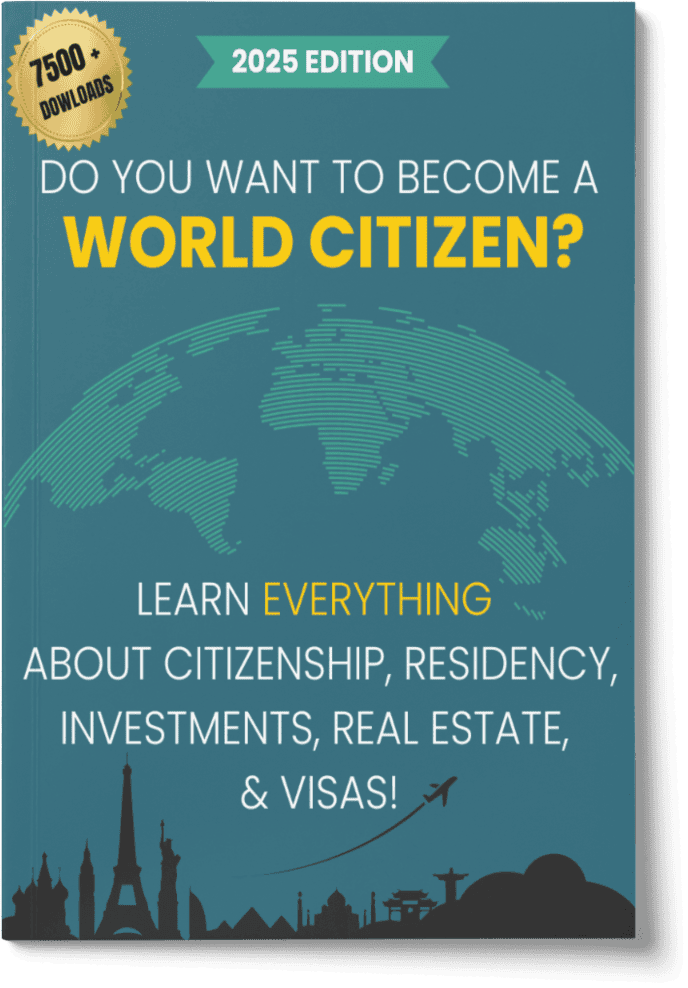What Are Work Visas?
Boost Your Freedom Without Compromise.
- Who offers the CHEAPEST program available.
- Who offers the BEST program available.
- What you need to qualify?

- The US categorizes work visas into several types, including H-1B for specialty occupations, L-1 for intra-company transfers, O-1 for individuals with extraordinary ability, and E visas for traders and investors.
- Applying for an H-1B visa involves sponsorship by a US employer, who must file a petition on behalf of the applicant, proving that the job requires specialized knowledge and that the applicant holds the required qualifications.
- The L-1 visa facilitates the transfer of key employees from an international company to a US office, requiring proof of employment at the company outside the US for at least one year in the past three years.
- Obtaining a Green Card through a US work visa can be achieved via employer sponsorship, self-petitioning in certain categories, and meeting eligibility for permanent residency.
- The eligibility criteria for an O-1 visa include demonstrating a record of extraordinary achievement in your field, supported by awards, significant contributions, and professional recognition.
In This Article, You Will Discover:
- Who offers the CHEAPEST program available.
- Who offers the BEST program available.
- What you need to qualify?
 Free Consultation
Free Consultation Easy to Use
Easy to Use 100% Safe & Secure
100% Safe & Secure
What Are US Work Visas?
A U.S. work visa lets foreign workers live and work in the U.S. for a set time. These visas bring skilled workers and talents to the U.S. economy. There are two main types:
- Temporary Work Visas: For short-term work in the U.S.
- Permanent Work Visas: Green cards for permanent work and living in the U.S.
Each visa has its own rules and requirements.
Types of US Work Visas
There are many U.S. work visas, each for different jobs. Here are some common ones:
1. H-1B Visa: Specialty Occupations
The H-1B visa is popular for professionals in fields like engineering and IT. It's for those with a job offer in the U.S. that needs a bachelor's degree or more.
- Eligibility: You need a U.S. employer to sponsor you. The job must require a degree, and you must have the right skills.
- Duration: It's for three years, extendable for another three, up to six years total.
2. L-1 Visa: Intracompany Transferee
The L-1 visa lets employees of international companies work in a U.S. branch. It's for managers or those with special knowledge.
- Eligibility: You must have worked for the foreign company for a year in the last three. You must work in a similar role in the U.S.
- Duration: L-1A holders can stay up to seven years, L-1B up to five years.
3. O-1 Visa: Extraordinary Ability
The O-1 visa is for those with extraordinary talent in arts, sciences, or other fields. It's for those who have gained national or international fame.
- Eligibility: You need to show your achievements, like awards or publications.
- Duration: It's for up to three years, with possible extensions.
4. E-2 Visa: Treaty Investor
The E-2 visa is for investors from countries with a trade treaty with the U.S. It lets them manage and operate a U.S. business with a big investment.
- Eligibility: You must be from a treaty country and have invested in a U.S. business.
- Duration: It's for up to two years, extendable as long as the business runs.
5. H-2A & H-2B Visas: Temporary Agricultural and Non-Agricultural Workers
The H-2A visa is for temporary agricultural workers. The H-2B visa is for non-agricultural workers in seasonal jobs like hospitality and construction.
- Eligibility: Employers must show there are no U.S. workers for the job.
- Duration: H-2A visas last up to a year, with possible extensions. H-2B visas last up to 10 months, with a one-time extension of one year.
6. TN Visa: Trade NAFTA Professionals
The TN visa is for professionals from Canada and Mexico under NAFTA. It's for jobs like engineers and accountants.
- Eligibility: You need a job offer in a NAFTA-approved job and meet the qualifications.
- Duration: TN visas are good for three years and can be renewed forever.
Eligibility Requirements for US Work Visas
Eligibility for U.S. work visas varies by type. But, there are common factors:
- Job Offer: Most visas need a job offer from a U.S. employer.
- Educational Qualifications: Many visas, like the H-1B, require a bachelor’s degree or equivalent experience.
- Experience: Some visas, like the L-1 or O-1, require professional experience or expertise.
- Employer Sponsorship: Many visas need the employer to petition for you. The employer must submit documents to USCIS.
- Language Proficiency: While not always needed, speaking English well can help, for visas that require communication skills.
How to Apply for a US Work Visa
Applying for a U.S. work visa involves several steps:
- Choose the Correct Visa: Pick the visa that matches your job and qualifications.
- Employer Petition: Your employer must submit a petition to USCIS for most visas. For some, like the H-1B or L-1, this is required before applying.
- Complete the Visa Application: After your employer's petition is approved, fill out the visa application online. You'll need to provide forms, pay fees, and submit documents.
- Attend the Visa Interview: After applying, you'll need to go to a U.S. embassy or consulate for an interview. Bring all your documents, including the approved petition and passport.
- Wait for Visa Approval: After the interview, your application will be processed. You'll be told if your visa is approved or not.
- Enter the U.S.: If approved, you can enter the U.S. and start working for your employer as stated in the visa terms.
Challenges of US Work Visas
U.S. work visas are a great way to find a job in the United States. But, applying for them can be tough. Here are some common problems people face:
- Complexity of the Process: Getting a U.S. work visa is complicated. You need lots of documents and must follow strict rules.
- Visa Caps and Quotas: Some visas, like the H-1B, have limits. This makes it hard to get one in busy years.
- Delays and Processing Times: It can take months to get a visa. This is because of the long wait times.
- Changes in Immigration Policies: U.S. immigration rules can change. This might affect who can get a work visa and how.
Conclusion
U.S. work visas are a big chance for people from other countries to work in the U.S. They help the U.S. economy by bringing in new skills. It's key to know what you need and how to apply to find the right visa for you.
Even though it might seem hard, with the right planning, you can get a U.S. work visa. This opens up new career paths and a chance to live in a vibrant country.
- Who offers the CHEAPEST program available.
- Who offers the BEST program available.
- What you need to qualify?
 Free Consultation
Free Consultation Easy to Use
Easy to Use 100% Safe & Secure
100% Safe & Secure







